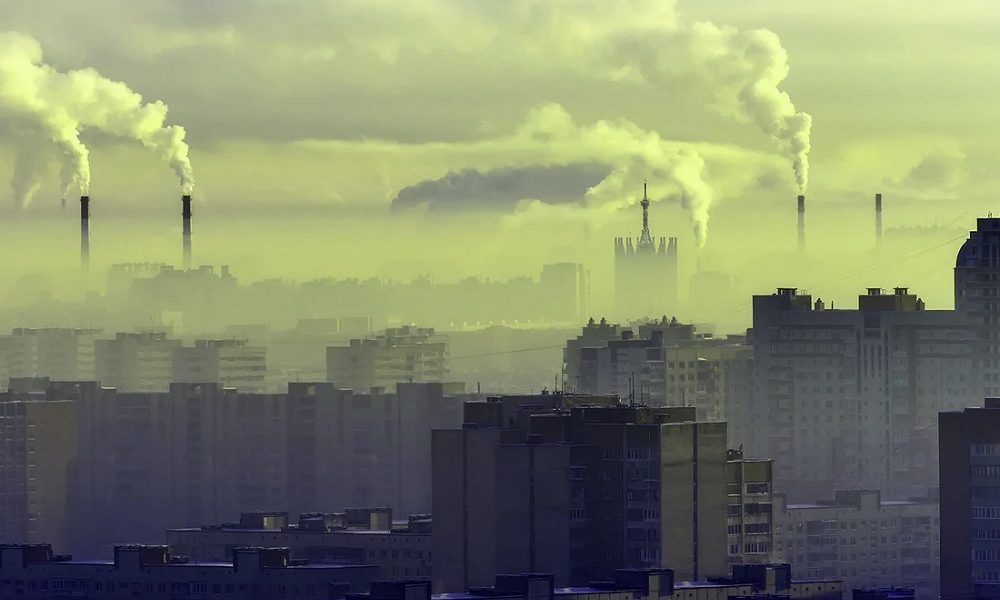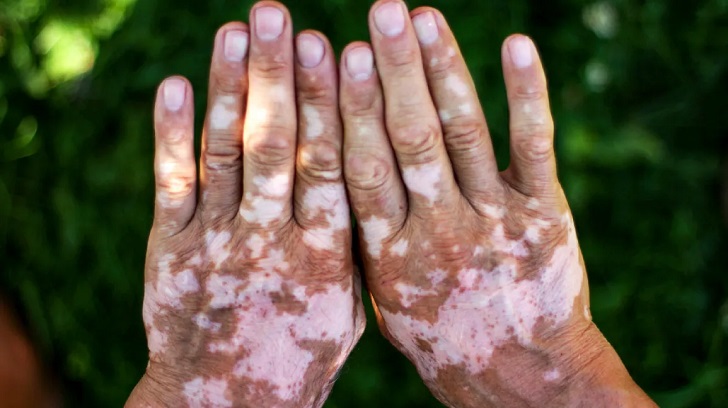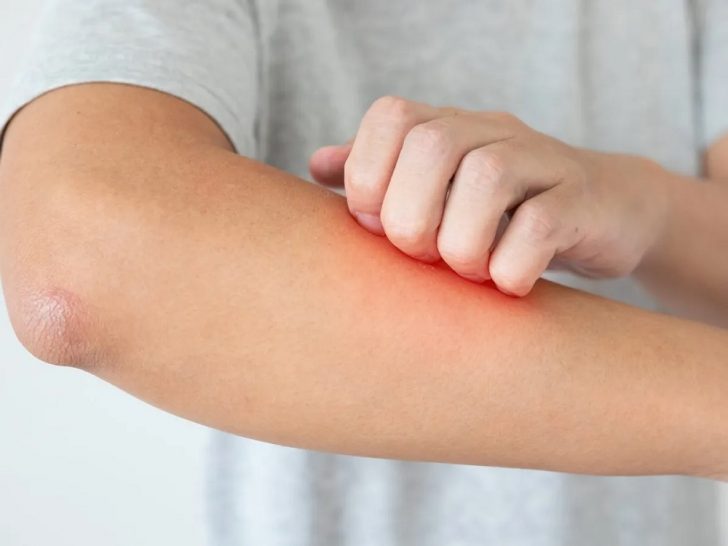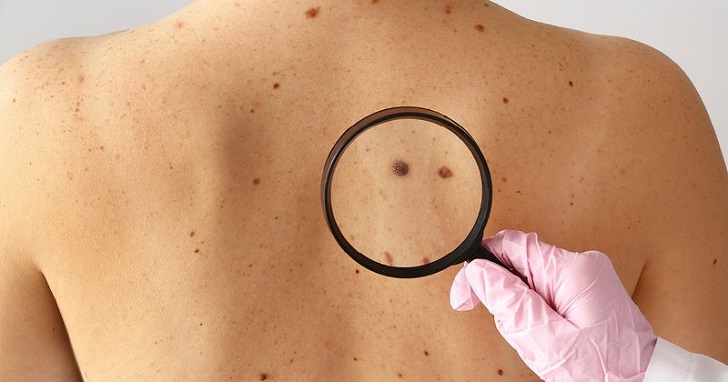
Effects of Air Pollution on the Skin

Air pollution is a pressing global issue that affects the environment and human health in various ways. While its impact on respiratory and cardiovascular health is well-documented, the effects of air pollution on the skin are often overlooked. Here are some of the detrimental effects of air pollution on the skin:
Premature Aging
One of the significant effects of air pollution on the skin is premature aging. Air pollutants, such as particulate matter (PM), volatile organic compounds (VOCs), and polycyclic aromatic hydrocarbons (PAHs), can penetrate the skin and generate oxidative stress.

Christine Case-Lo/ Healthline | Our skin bears the burden of air pollution
This oxidative stress produces free radicals, which damage collagen and elastin fibers, essential components that maintain the skin’s elasticity and firmness. As a result, prolonged exposure to air pollution can cause fine lines, wrinkles, and sagging skin, making individuals appear older than their actual age.
Skin Discoloration
Air pollution can also contribute to skin discoloration. Particulate matter and other pollutants can produce excess melanin, leading to dark spots, uneven skin tone, and hyperpigmentation. These skin discolorations can be particularly concerning for individuals with darker skin tones, as they may be more prone to developing post-inflammatory hyperpigmentation.
Dryness and Irritation
Exposure to air pollution can strip the skin of its natural moisture and disrupt the skin barrier function. Pollutants can compromise the skin’s ability to retain moisture, leading to dryness, flakiness, and a rough texture. Additionally, pollutants can cause skin irritation, redness, and inflammation, exacerbating conditions such as eczema and rosacea. Those with sensitive skin may be more susceptible to these effects.

Times/ iStock Images | The link between air pollution and skin aging is undeniable
Acne and Breakouts
Air pollution can also contribute to developing acne and other skin breakouts. Pollutants can clog pores, leading to the accumulation of dirt, bacteria, and sebum. This, in turn, can trigger an inflammatory response in the skin, forming pimples, blackheads, and whiteheads. Individuals with acne-prone skin may find their condition worsens in areas with high levels of air pollution.
Increased Sensitivity and Allergies
Air pollution can sensitize the skin and make it more prone to allergic reactions. Pollutants can disrupt the skin barrier, allowing allergens and irritants to penetrate the skin more easily. This can trigger allergic reactions, such as itching, redness, and hives. Individuals with existing skin conditions, such as atopic dermatitis, may experience flare-ups and increased sensitivity due to air pollution exposure.

Healio/ Adobe Stock | In the U.S., more than 9,500 people are diagnosed with skin cancer every day
Skin Cancer
Long-term exposure to air pollution has been associated with an increased risk of skin cancer. Some air pollutants, such as PAHs and certain heavy metals, have been found to have carcinogenic properties. These pollutants can penetrate the skin and cause DNA damage, leading to the development of skin cancer over time. Protecting the skin from UV radiation and air pollution is crucial to reducing skin cancer risk.
Impaired Wound Healing
Air pollution can impede the skin’s ability to heal wounds and injuries effectively. Pollutants can interfere with the production of collagen, a crucial protein that aids in the healing process. This can lead to delayed wound healing, leaving the skin more vulnerable to infections and scarring.
Disruption of Skin Microbiome
The skin has a delicate balance of microorganisms that form its microbiome. Air pollution can disrupt this balance, altering the composition of the skin’s microbiome. This disruption can compromise the skin’s ability to defend against harmful bacteria and maintain its health and well-being.
More in Medicare
-
`
A-List Celebrities at Milan Fashion Week Spring 2025
The excitement of Milan Fashion Week Spring 2025 is palpable as the fashion elite gather to celebrate creativity and style in...
October 1, 2024 -
`
Polish Government to Rise Minimum Wage By 8% in 2025
The Polish government’s minimum wage is set to increase by 8% in 2025. While workers and unions welcome the move, many...
September 25, 2024 -
`
Kidney Infection: Causes, Symptoms, Prevention & Treatment
Kidney infections – AKA pyelonephritis – are serious health conditions that can lead to severe discomfort. But does kidney infection cause...
September 19, 2024 -
`
What to Do in Ubud, Bali – Top Attractions & Activities
Ubud, the cultural heart of Bali, offers an array of activities that capture the essence of this enchanting island. From exploring...
September 11, 2024 -
`
Important Aspects of Your Health You Should Pay Attention To
When thinking about your health, it’s crucial to consider the key factors that create a solid foundation for your well-being. These...
September 6, 2024 -
`
6 Creative Birthday Party Ideas For Adults
Gone are the days when birthdays were just about cakes and candles. Now, it is all about creating memorable experiences that...
August 28, 2024 -
`
Are Chanel and Johnny leaving Days of Our Lives? Here Are the Facts
Fans of Days of Our Lives have been on the edge of their seats, wondering if Chanel and Johnny are leaving...
August 20, 2024 -
`
How Much Does Massage Business Make? A Profitability Breakdown
Curious about how much does massage business make? The massage spa industry in the United States is a significant sector, with...
August 14, 2024 -
`
How to Stay Healthy During Cold and Flu Season
Cold and flu season can be a daunting time, with the risk of illness looming large. Missing work, classes, or social...
August 9, 2024















You must be logged in to post a comment Login